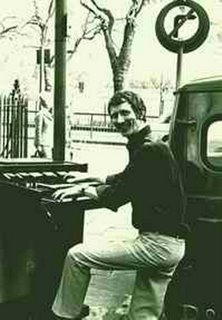interview to Dr Lonnie Smith




I got the idea to ring and chat with DR Lonnie Smith after visiting his website and finding out about his participation at Umbria Jazz 2006. Many of his records like “Afro-Desia”, “Move Your Hand” or “Finger Lickin’ Good Soul Organ” make up much of my DJ set playlist and so for me it was a great honour to be able to have a friendly chat with a legend of Hammond Jazz and a favourite organist of mine.Lonnie Smith has been on the front line of the jazz scene since 1967. He’s collaborated with Lou Donaldson, David Newman, Blue Mitchell, Joe Lavano , George Benson, Jack McDuff , Dizzy Gillespie, Grover Washington Jr, Ron Carter, Jimmy McGriff, Leon Thomas amongst others. He’s recorded and appeared on over 70 records.He’s also well known for his work with the R’n’B and Soul greats like Gladys Knight, Dionne Warwick, Etta James, The Impressions and the Coasters.DR Lonnie Smith has recently been awarded “Best Jazz Organist” 2003/2004/2005 by the Jazz Journalist Association.Today, Smith continues to play throughout Europe, America and The Far East. Keep an eye on your paper because he regularly appears and plays in small Jazz Bar venues.
As always i find an incredible humble person....
How did you start playing Jazz music?
Mine was a family of singers. In the beginning I sang in Pop groups. When, in a church, I heard the organ for the first time I was gripped by the sound of this instrument and I feel in love with it. I was also very taken by Jazz music and when I heard guys like Wild Bill Davies and Jimmy Smith, I said to myself that that was the music I had to make from that moment on.My problem was that I didn’t know how to play Jazz music, so I used the experience I had to start playing this type of music, starting from what I knew, and that was Pop music.
And so you took to the Hammond...
When I was a kid I’d always go to Art Kubera’s musical instruments shop in Buffalo, every day, like it was my job, I’d go there in the morning and leave in the evening, just to see and look at the Hammond organs.One day I found the shop closed and just as I was leaving the owner calls me round the back and tells me: ”You see that organ? Take it, it’s yours” I couldn’t believe it, it was a brand new organ that was worth a lot of money.From then on I started playing it by ear because I couldn’t read music, and by making use of my experience with Motown, Soul and Pop and what I heard from Smith and Davies. I started playing in all the Jazz Music Jam Sessions and started to get myself noticed. That man was angel for me and he completely changed my life. Even today when I see him, we talk about this thing that happened many years ago.
You’ve worked many times with George Benson amongst others. How did you two meet?
I met Benson through other people, during a Jack Mc Duff concert. George was playing with him. Jack called me onstage and Benson was taken by the way I played.At the end of the concert we got to know each other and he asked me for my phone number.After a while, I got to know that he was looking for me because he had left McDuff but had lost my number, so through Jimmy Boyd, a manager that hung out at “Smiles Paradise” club and who had also arranged for me to play with Grant Green, he was able to contact me.And that’s how I started playing with George Benson.
Tell me a story about that period...
After we’d become friends we found ourselves in his mother’s house in Pittsburgh and we went into the cellar. That day we ended up rehearsing two songs “Secret Love” and “Clockwise” and our band was born.After a while that we’d been playing here and there, some managers from Columbia heard us and signed us both up. For Columbia I recorded “Finger-Lickin’ Good Soul Organ”.
I know that you were much sought after as an organist at that time.
At that time you’d play a lot with everybody, David Newman, Blue Mitchell, Lee Morgan, King Kurtis, Lou Donaldson and Grant Green amongst others I played on many Donaldson albums up until Blue Note asked me to record my own: “Move Your Hand”, “Turning Point”, “Think!”, and “Drives”. In a few of the tracks on those albums you can hear a lot of the origins of Pop Soul like “Sunshine Superman” and “Spinning Wheels”. I then recorded with Grove Merchant up until 1976 and so on.
Which musician have you had most feeling with and created most?
During my career I have played with many musicians and continue to do so till this day. Without a doubt Donaldson is the one with which I had an extraordinary rapport, almost like a marriage. Lou and I are still very close and our friendship is incredible .
As you are still very actively playing, what do you think of this new explosion of 60’s Soul Jazz, / Boogaloo?
I’m stupefied to see that today many people and many youngsters listen to music that we wrote in the 60’s.At that time I would never have thought that our music would have such a long life. Just think, Lou and I are still playing “Alligator Boogaloo” (1967).
What are your future projects? Are you coming to Italy?
My dream would be to create a sort of resting place for Jazz musicians; many don’t have insurance or pensions. I’m playing all over, a lot; I’ll be in Italy for Umbria Jazz in July.
Labels: alessio berto, brian auger, funk, groove, hammond, jazz, jazzmotel, jimmy smith, lonnie smith, nueva york, organ jazz, soul, spiritual jazz














